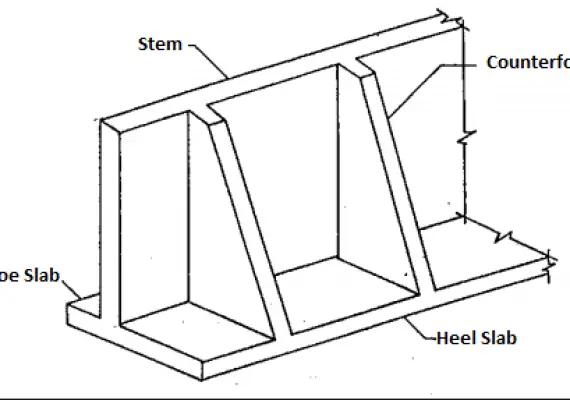What Does Damp Proofing Mean In Construction?
What Does Damp Proofing Mean In Construction?
Damp proofing is a process that involves using a mixture (traditionally tar or unmodified asphalt) as a coating on the exterior side of a structure and has one main purpose: stopping the transfer of soil moisture into the structure.
This is done to prevent rising damp, which is when water wicks up through masonry units by capillary action. Damp proofing can be achieved through damp proof courses, damp proof rods, liquid damp proofing membranes, and other methods.
Waterproofing, on the other hand, is intended to keep out both moisture (and water vapor) and liquid water from crossing a material t is typically achieved through coatings or membranes that are applied to the outside of the wall.
Waterproofing provides a higher quality seal against water than damp proofing does, and it is often used in areas with high water tables or severe soil water conditions.
What Are The Three 3 Common Materials Used For Damp Proofing?
The three common materials used for damp proofing are flexible materials like butyl rubber, hot bitumen (asphalt), and plastic sheets.
Other materials that can be used for damp proofing include semi-rigid materials like mastic asphalt, rigid materials like impervious brick, stone, slate, cement mortar, or cement concrete painted with bitumen, and integral damp proofing in concrete.
💥🎁 Christmas & Year-End Deals On Amazon !
Don't miss out on the best discounts and top-rated products available right now!
🛒 Shop Now and Save Big Today!*As an Amazon Associate, I earn from qualifying purchases.
What Are The Disadvantages Of Damp Proofing?
The main disadvantage of damp proofing is that it cannot seal larger cracks, holes left by form ties, surface protrusions, and bug holes. Additionally, the limited thickness applied and the brittle nature of the product can be damaged by coarse or careless backfilling.
Damp proofing also has a tendency to create cracks in the structure due to its level problems, and it increases the self-weight of the whole structure. Furthermore, damp proofing does not provide protection against hydrostatic pressure like waterproofing does.
How Is Damp Proofing Done?
Damp proofing is a type of moisture control applied to building walls and floors to prevent moisture from passing into the interior spaces.
It is typically achieved through a coating that is either sprayed on or rolled onto the outside of the wall, or through a damp proof course (DPC) which is a barrier that prevents rising damp.
Other methods of damp proofing include flashing material, damp proofing rods, damp proofing cream, and damp proof membranes (DPM). Damp proofing rods are made of the same material as flashing material and are inserted into drill holes along the mortar course.
Damp proofing cream is a thick paste that is squeezed with a sausage gun into horizontal drill holes along the mortar course.
💥🎁 Christmas & Year-End Deals On Amazon !
Don't miss out on the best discounts and top-rated products available right now!
🛒 Shop Now and Save Big Today!*As an Amazon Associate, I earn from qualifying purchases.
A damp-proof membrane (DPM) is a membrane material applied to prevent moisture transmission. Integral damp proofing in concrete involves adding waterproofers to the concrete mix to make it moisture resistant.
The most common method for installing a reliable, remedial damp proof course is chemical injection using specially formulated cream or water-based product. The wall is drilled at the appropriate level by an expert and then the cream is injected into the holes.
This creates a water repellent barrier that provides full protection against rising damp. Once all measures have been put in place, re-plastering will need to be carried out on internal walls of the building.
Having property care completed in this way should be covered by insurance and should come with guarantees from reputable companies.
How Many Years Does Damp Proofing Last?
When done properly, a damp proof course can and should last for 20 years or longer. Damp proofing is typically achieved through a coating that is either sprayed on or rolled onto the outside of the wall.
If professionally installed, most companies will offer a 20-year warranty on the damp proof course. The worth of the house and its current state can be determined by the damp proofing course.
💥🎁 Christmas & Year-End Deals On Amazon !
Don't miss out on the best discounts and top-rated products available right now!
🛒 Shop Now and Save Big Today!*As an Amazon Associate, I earn from qualifying purchases.
In order to keep the damp proofing membrane highly effective, it is important to seal all penetrations prior to using a liquid damp proofing membrane and overlap the seams in your sheet membrane.
